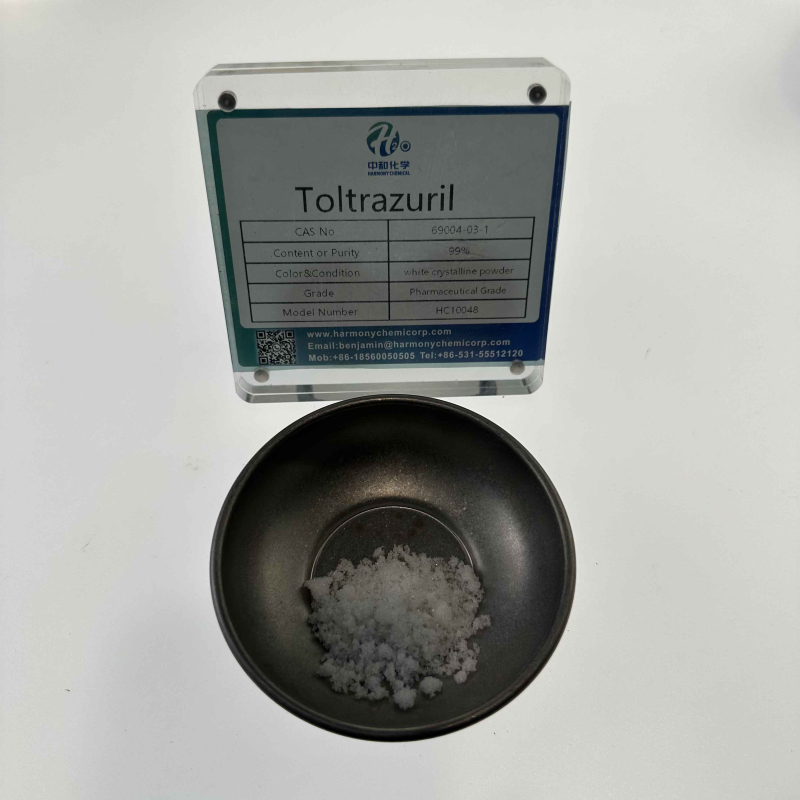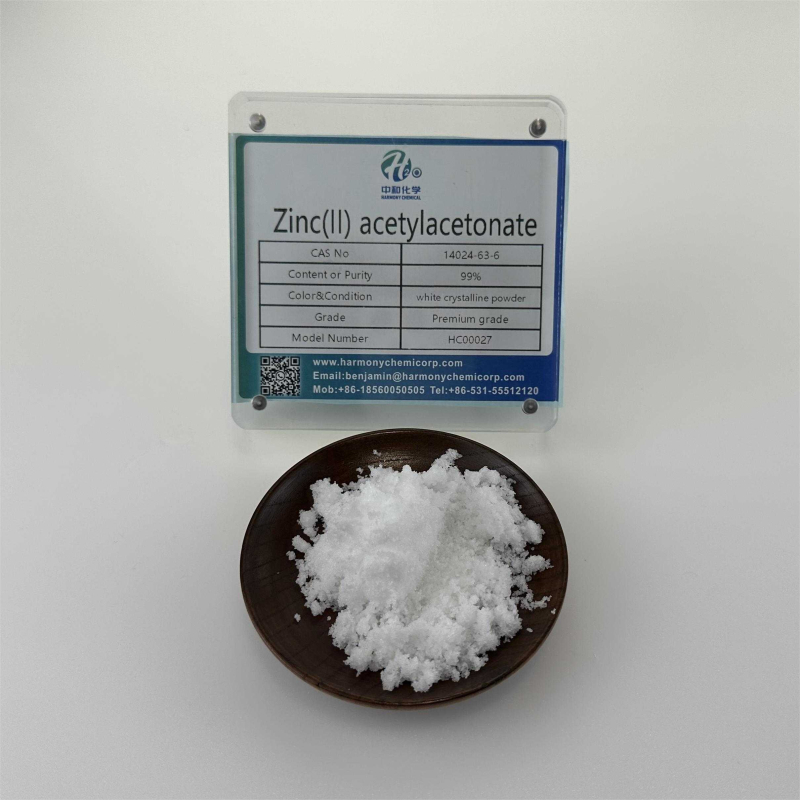Polyamide resin, as a massive quantity of engineering plastics, is extensively used in fields such as machinery, automobiles, electrical appliances, cloth equipment, chemical equipment, aviation, metallurgy, etc.Becoming an fundamental structural fabric in a number industries, its most important traits are as follows:1. Excellent mechanical properties. Nylon has excessive mechanical energy and precise toughness.2. Good self lubrication and friction resistance.
Contact Now
Density1.13 [at 20 ℃]Vapor pressure0.317Paat25 ℃FormViscousLiquidColorGreenWater solubilityIn soluble in waterExposure limitNIOSH: IDLH10mg/m3; TWA0.015mg/m3Nickel naphthenate is an natural compound with the chemical formulation of C22H14NiO4. It is normally used as paint drier, timber preservative, water resistant agent for fabrics, insecticide and bactericide.
Contact Now
nameEntrectinibCAS NO1108743-60-7Molecular formulaC31H34F2N6O2molecular weight560.64boiling point717.5±60.0 °C(Predicted)density1.340±0.06 g/cm3(Predicted)Storage conditionsStore at -20°Csolubilityinsoluble in H2OAcidity coefficient (pKa)12.01±0.43(Predicted)formsolid
Contact Now
Polyvinyl alcohol resin (PVA) aqueous answer has awesome moldability and emulsifying properties, forming a movie with amazing adhesion, solvent resistance, friction resistance, tensile strength, and oxygenbarrier properties.Solubility: Soluble in water, typically heated to 65-75 ℃ for whole dissolution. Insoluble in gasoline, kerosene, vegetable oil, benzene, toluene, dichloroethane, carbon tetrachloride, acetone, ethyl acetate, methanol, ethylene glycol, etc. Slightly soluble in dimethyl sulfoxide.
Contact Now
CAS NO104-47-2Molecular formulaC9H9NOmolecular weight147.17melting point8 °Cboiling point286-287 °Cdensity1.085 g/mL at 25 °CStorage conditionsSealed in dry,Room TemperatureformLiquidcolourClear colorless to slightly yellowpH value4.5 (100g/l, H2O, 20℃)suspension
Contact Now
nameClorsulonCAS NO60200-06-8Molecular formulaC8H8Cl3N3O4S2molecular weight380.66melting point194-203°Cboiling point651.7±65.0 °C(Predicted)density1.800±0.06 g/cm3(Predicted)Storage conditionsKeep in dark place,Inert atmosphere,2-8°CformneatcolourWhite
Contact Now
name3-Amino-1-hydroxyadamantaneCAS NO702-82-9Molecular formulaC10H17NOmelting point265 °Cboiling point266.8±23.0 °C(Predicted)density1.252±0.06 g/cm3(Predicted)Storage conditionsKeep in dark place,Inert atmosphere,Room temperaturesolubilityDMSO (Slightly), Methanol (Slightly)formCrystalline PowdercolourWhite to yellow
Contact Now
Melting point144-146 °CBoiling point353 °CDensity1,45 g/cm3Refractivity1.5555 (estimate)Flash point352-354°CStorage conditionsSealed in dry,Room TemperatureSolubilitySoluble in hot acetone.Formpowder to crystalColourWhite to Light yellowCAS90-98-2
Contact Now
nameUlipristal AcetateCAS NO126784-99-4Molecular formulaC30H37NO4molecular weight475.62melting point183-185 ºCboiling point640.1±55.0 °C(Predicted)density1.19Storage conditions-20°Cformpowdercolourwhite to beige
Contact Now
Appearance white block or powderAsh content/% ≤ 0.01 0.01 0.01 0.01The softening factor is 83~143 ℃. Soluble in acetone, toluene, cyclohexane, ethyl acetate, tetrahydrofuran, dichloromethane, etc., insoluble in solvent gas and water
Contact Now
nameToltrazurilCAS NO69004-03-1Molecular formulaC18H14F3N3O4Smolecular weight425.38melting point194-196°Cdensity1.54±0.1 g/cm3(Predicted)Storage conditionsSealed in dry,Room TemperatureAcidity coefficient (pKa)Sealed in dry,Room Temperatureformneat
Contact Now
nameTriisobutyl phosphateCAS NO126-71-6Molecular formulaC12H27O4Pmolecular weightv266.31boiling point~205 °Cdensity0.965 g/mL at 20 °CStorage conditionsStore below +30°C.solubility0.26g/lformOilcolourColourless
Contact Now
Prilocaine is an amide type close by anesthetic. Its anesthetic depth and pace are similar to Lidocaine, alternatively its size is prolonged and its vasodilation have an impact on is weak. The toxicity is limit than lidocaine. Clinically used for close by anesthesia, specially fantastic for victims who hold away from the utilization of adrenaline.namePrilocaineCAS NO721-50-6Molecular formulaC13H20N2Omelting point37-38°boiling pointbp0.1 159-162°density1.0117 (rough estimate)refractivitynD20 1.5298Storage conditions2-8°CformCrystalline powderSOLUBLE6.169g/L(25 ºC)
Contact Now
nameL-ProlinamideCAS NO7531-52-4Molecular formulaC5H10N2Omelting point95-97 °Cboiling point213.66°C (rough estimate)refractivity1.4720 (estimate)Storage conditionsKeep in dark place,Inert atmosphere,Room temperaturesolubilityChloroform (Slightly), Methanol (Slightly)formPowder or GranulescolourWhite
Contact Now
nameAdmireCAS NO105827-78-9Molecular formulaC9H10ClN5O2molecular weight255.66melting point136-144°Cdensity1.542formWhite crystallineVapor pressure2×10-7Pa (20℃)
Contact Now
nameMK-4827 (tosylate)CAS NO1038915-73-9Molecular formulaC26H28N4O4Smolecular weightmolecular weightmelting point>142oC (dec.)Storage conditions-20°C FreezersolubilityMethanol (Slightly)formformcolourOff-White to Pale Yellow
Contact Now
Physicochemical properties: Acetylacetone zinc is a white powder with a attribute odor, secure properties, and convenient to react with oxidants. Melting factor 129-133 ℃. Easily soluble in methanol.Acetylacetone zinc can be used as an additive, inclusive of halogenated polymers, mainly polyvinyl chloride. It is the most usually used warmness stabilizer in the method of agents, and is additionally used as a catalyst.
Contact Now
namePropitocaine hydrochlorideCAS NO1786-81-8Molecular formulaC13H21ClN2Omolecular weight256.77melting point168-170°CStorage conditions2-8°CsolubilityFreely soluble in water and in ethanol (96 per cent), very slightly soluble in acetoneformneatcolourWhite to Off-WhitePrilocaine hydrochloride is a kind of local anesthetic of aminoamide. Pirocaine is commonly used in dentistry. Procaine is also often used in combination with Lidocaine as a preparation for skin anesthesia (Lidocaine/Procaine or EMLA) to treat sensory abnormalities and other conditions.
Contact Now
Melting point900 ° C (lit.)Density4.0g/mL (lit.)Vapor pressure0Paat20 ℃SolubilityH2O: insoluble (Chemicalbooklit.)FormPowderColor WhiteOdorOdorlessWater solubilityInsolubleinwaterThe herbal mineral of zinc phosphate is referred to as "parathionite", which has α- Type and β- There are two types.
Contact Now
namePrussian BlueCAS NO14038-43-8Molecular formulaC6FeN6.4/3Femolecular weight859.23density1.8Storage conditionsRoom TemperatureformPowderSOLUBLEpractically insolublesensitivenessHygroscopicstabilityStable. Incompatible with strong acids, strong oxidizing agents, ammonia. Light sensitive.
Contact Now
nameEsmolol hydrochlorideCAS NO81161-17-3Molecular formulaC16H26ClNO4molecular weight331.83melting point48-50°Cdensity1.026Storage conditions−20°CsolubilityH2O: soluble12mg/mLformbuffered aqueous solutioncolourWhite to Off-White
Contact Now
nameLevamisole hydrochlorideCAS NO16595-80-5Molecular formulaC11H13ClN2Smolecular weight240.75melting point266-267 °Cflash point9℃Storage conditions2-8°Crefractivity-126 ° (C=1, H2O)formCrystalline PowdercolourWhite to almost white
Contact Now
Melting Point180-185 °C(lit.)Density1.18 g/mL at 25 °C(lit.)Refractivityn20/D 1.465Storage Conditionsroom tempSolubilityH2O: 6 M, clear, colorlessFormCrystalsColourWhite to slightly yellowPh Value4.5-5.5 (100g/l, H2O, 20℃)1. It can be used as an intermediate in medicine, pesticides, dyes, and different natural synthesis.
Contact Now
AKD wax: Currently, the manufacturing of AKD wax can be non-toxic, wastewater free, odorless, and pollution-free. Obtained country wide patents for manufacturing the usage of solvent free method. Liquid AKD wax can additionally resolve the hassle of paper slipping.
Contact Now




























